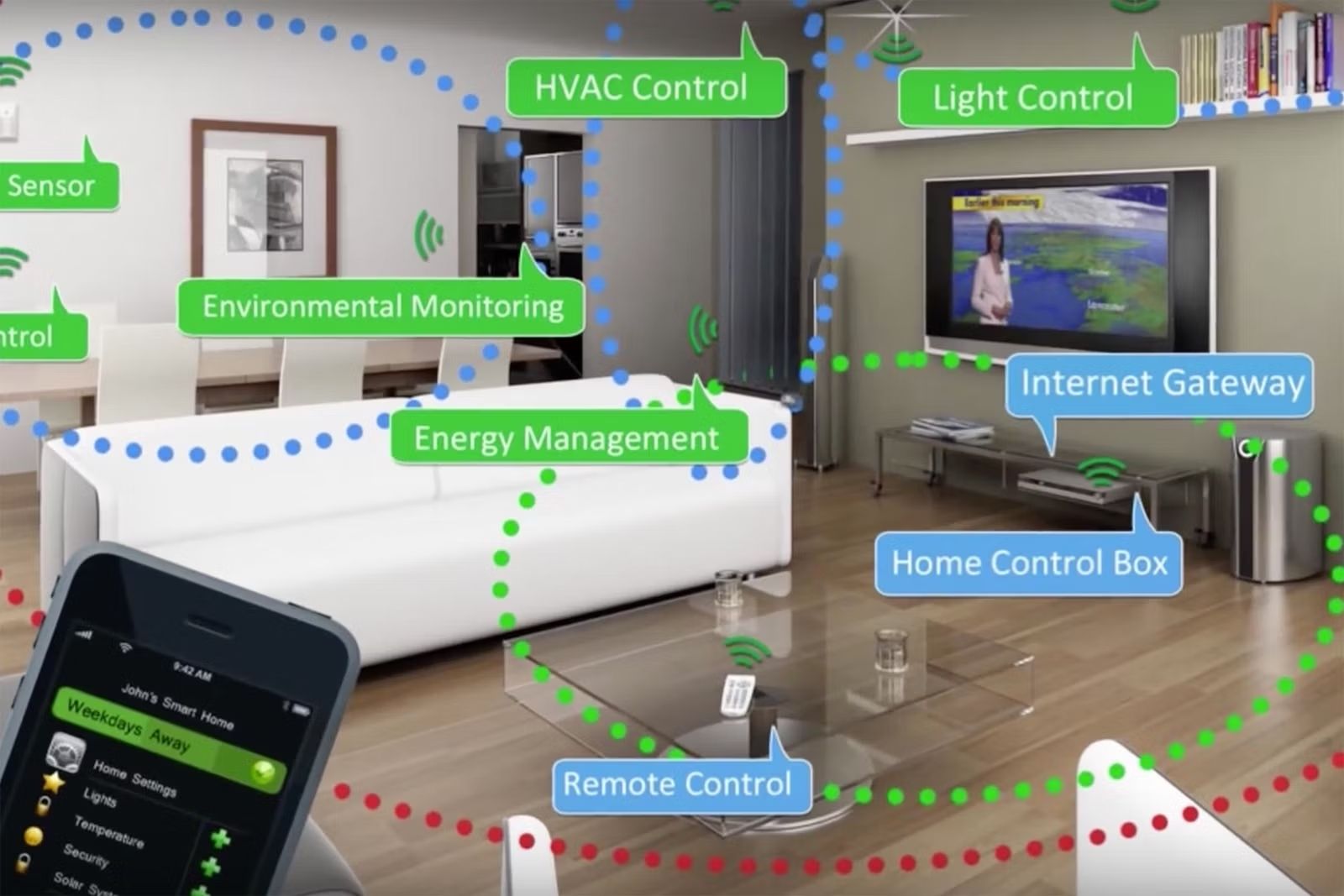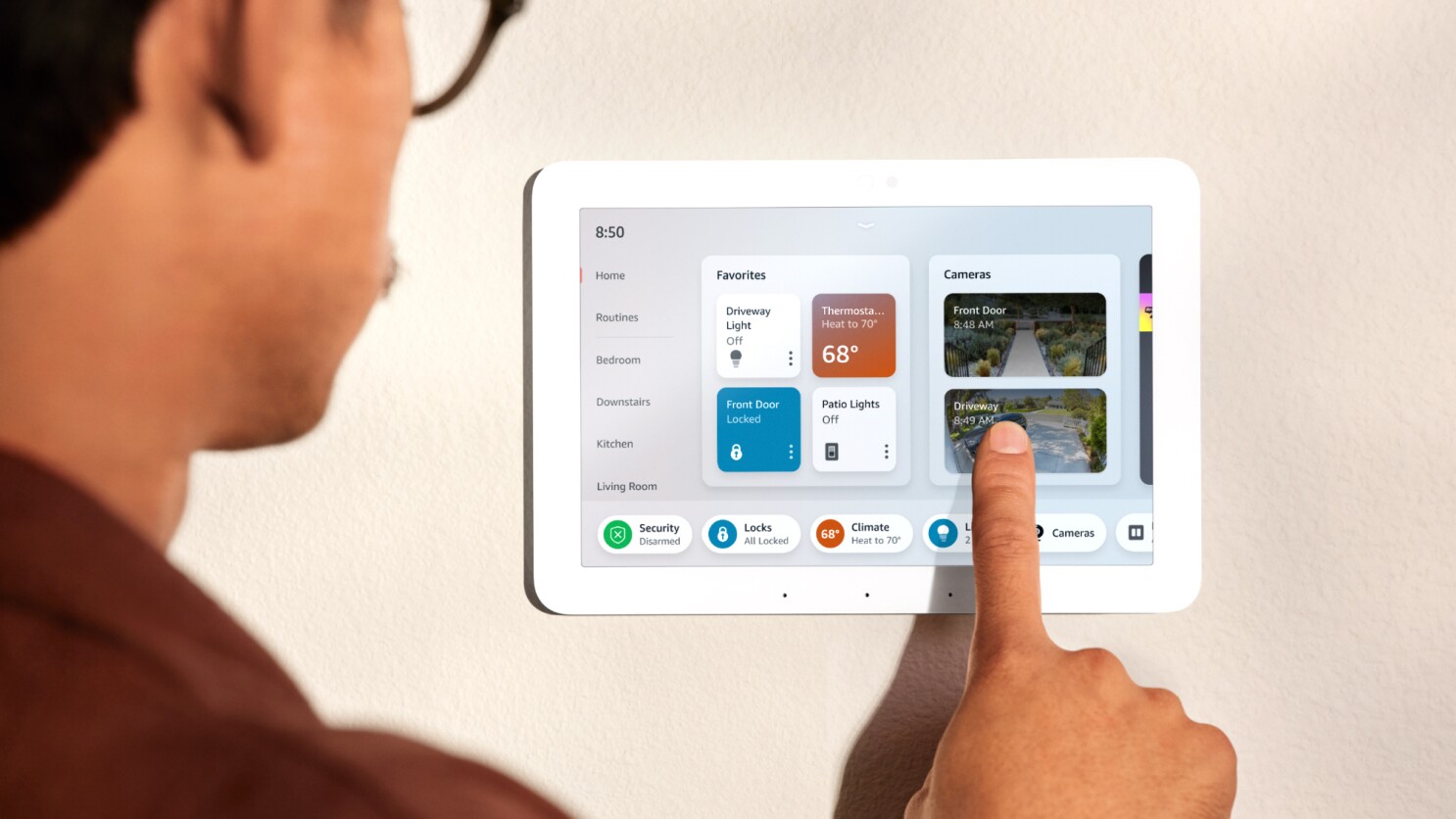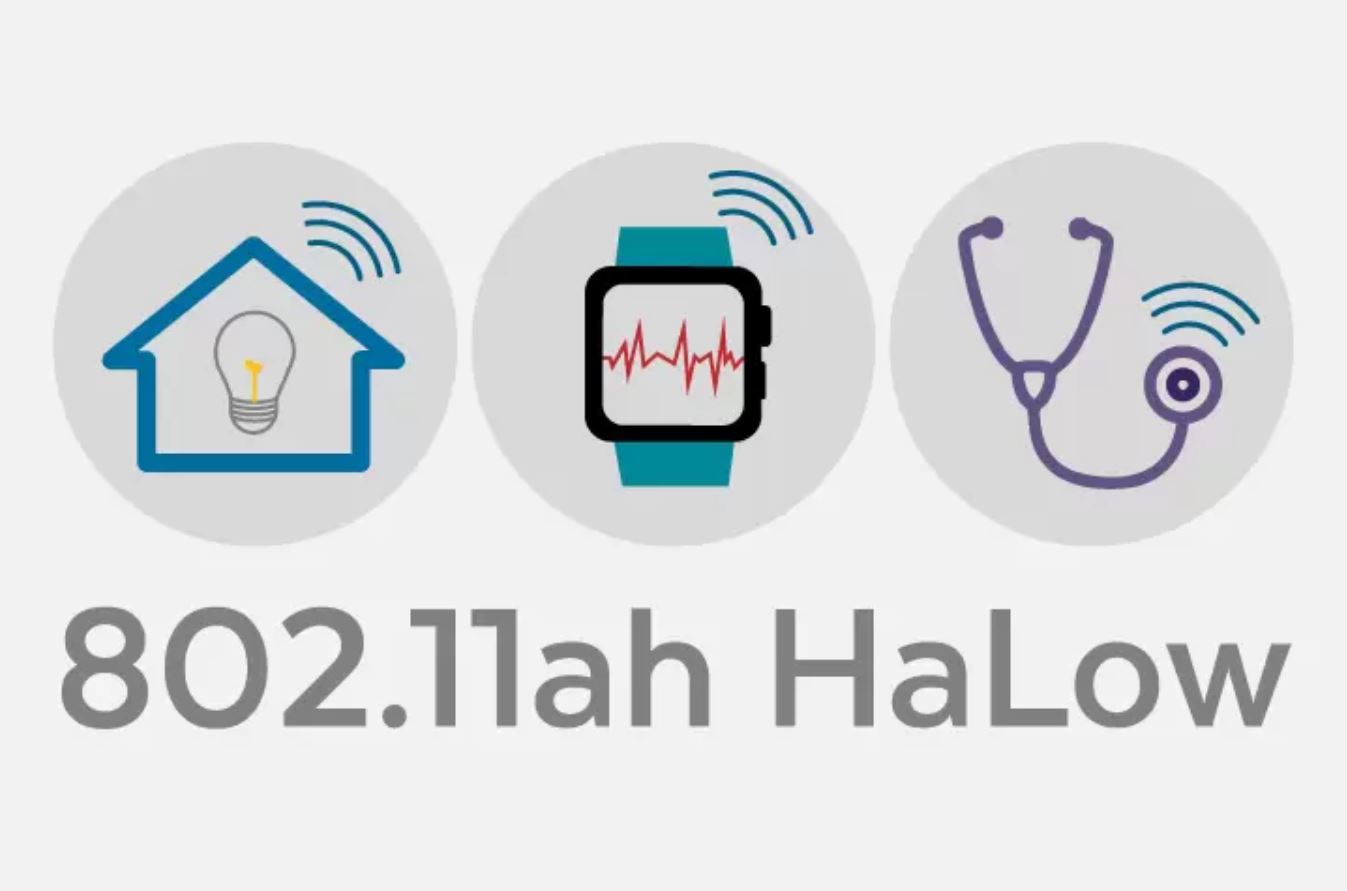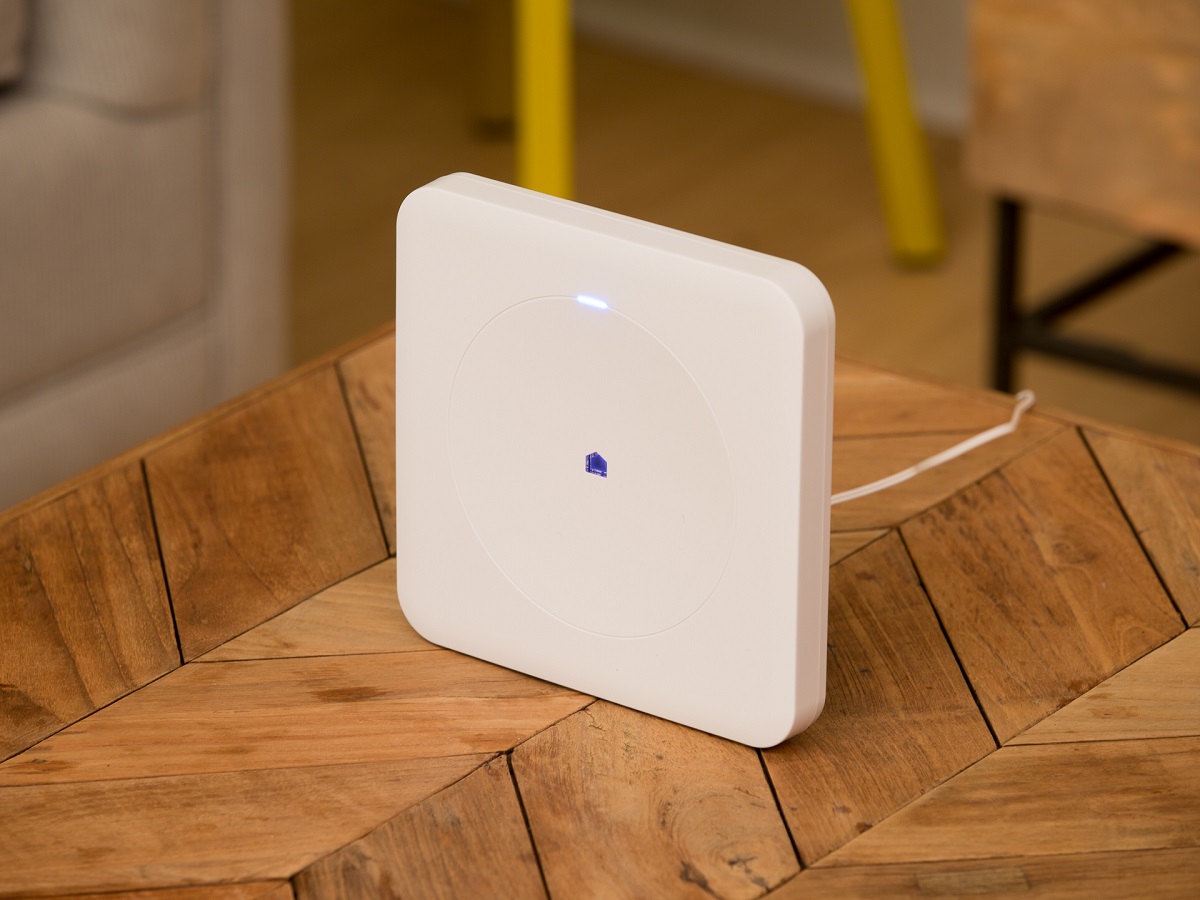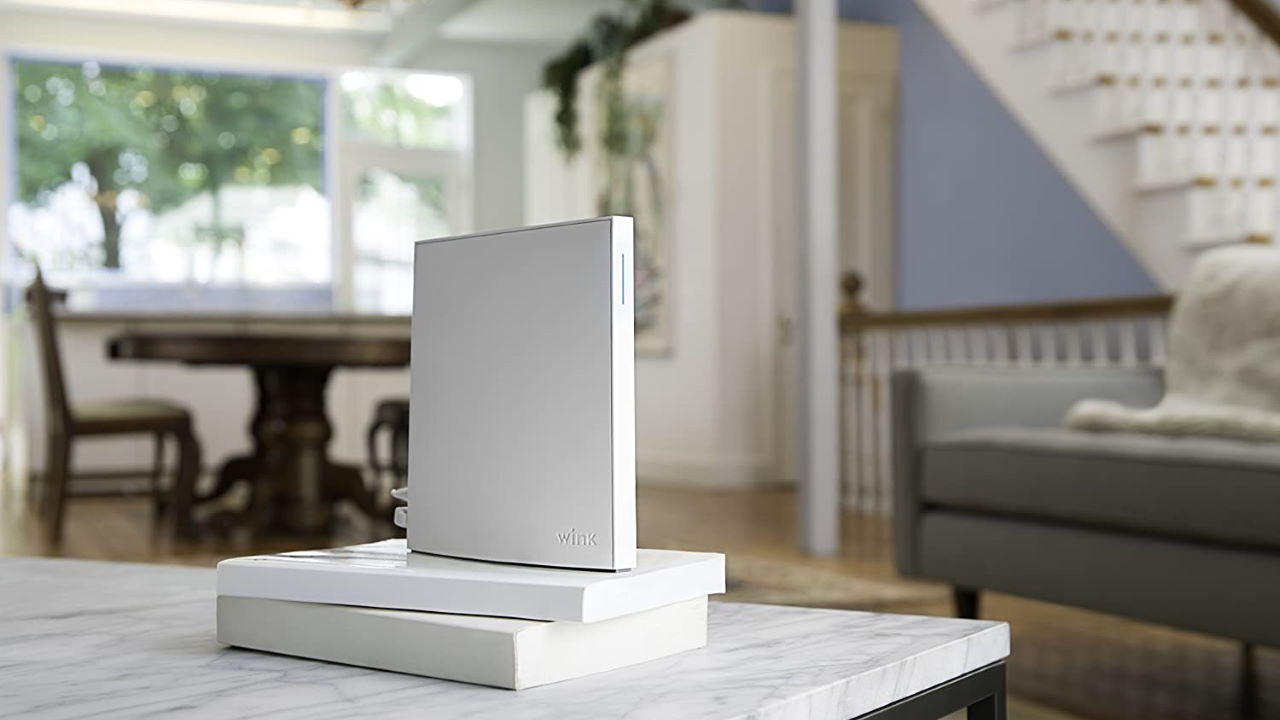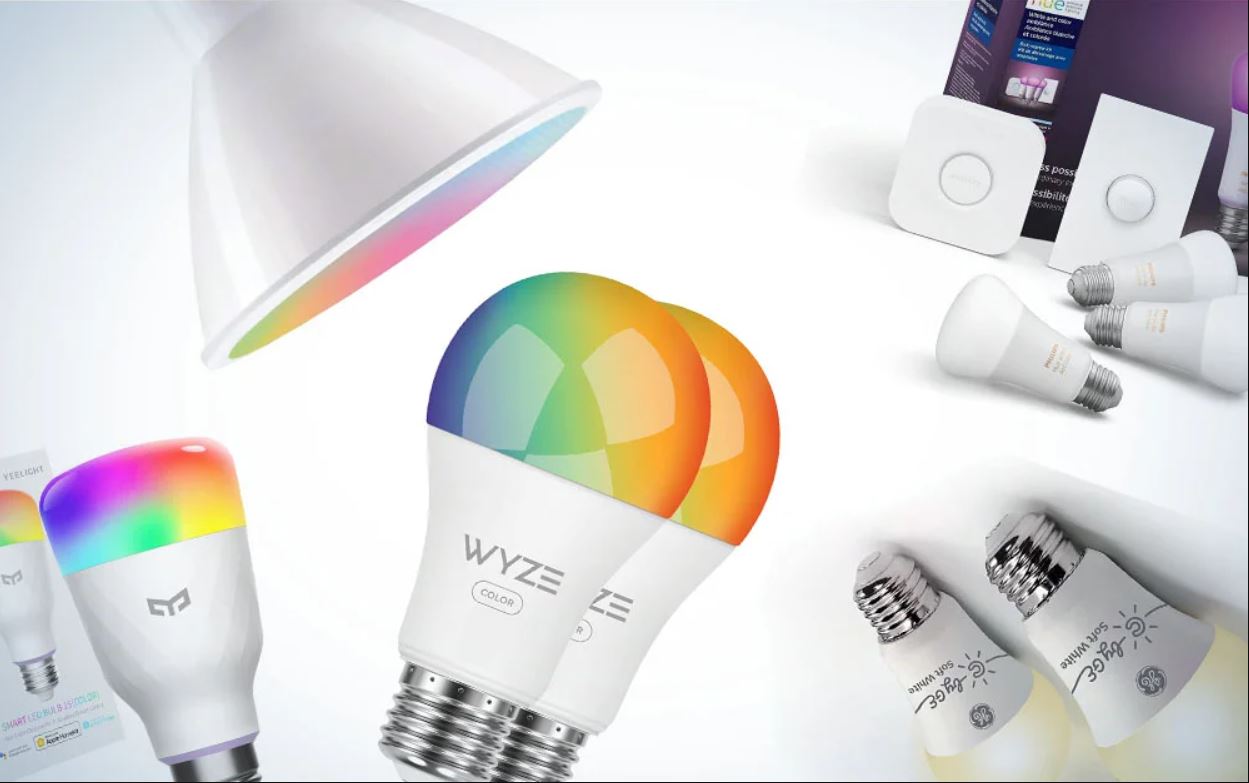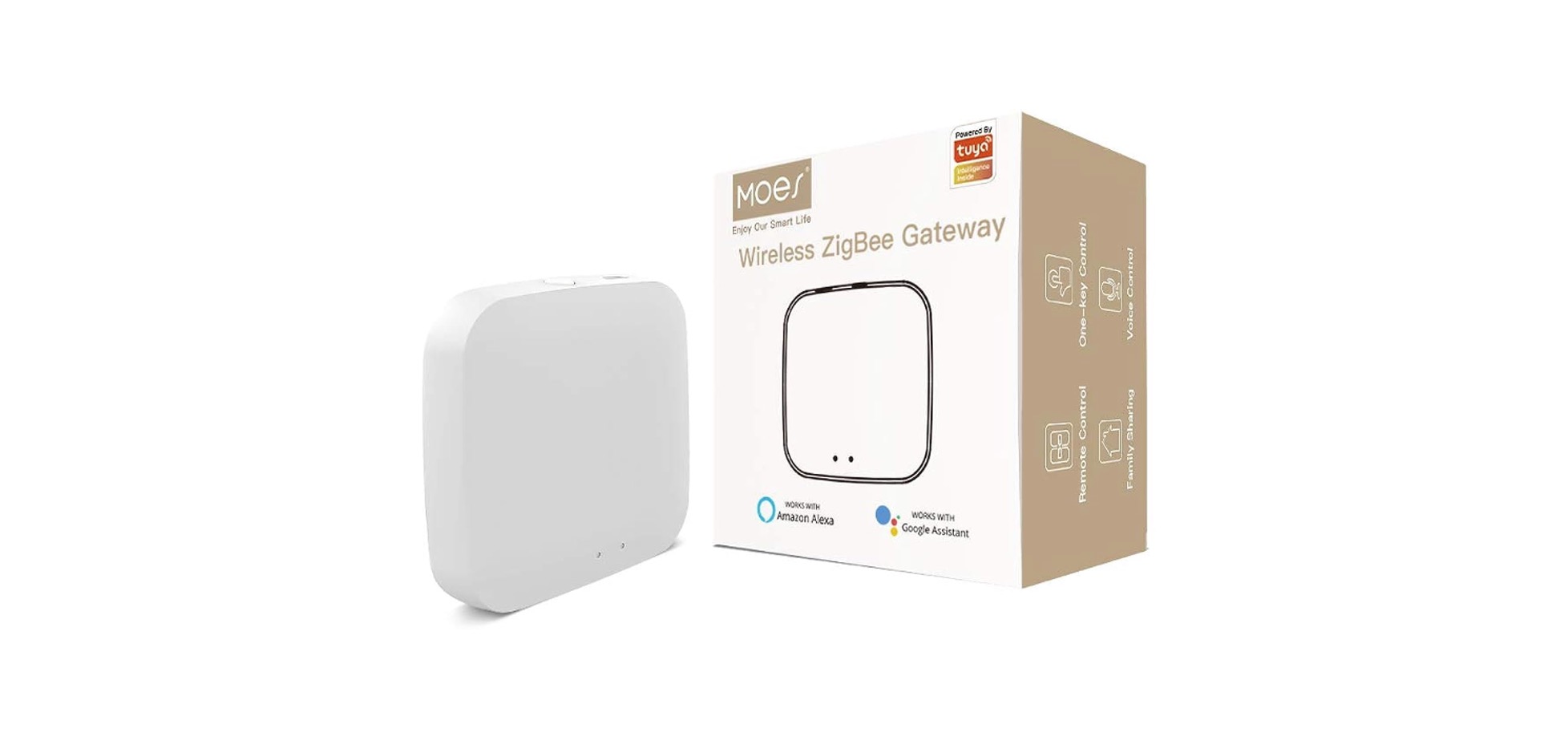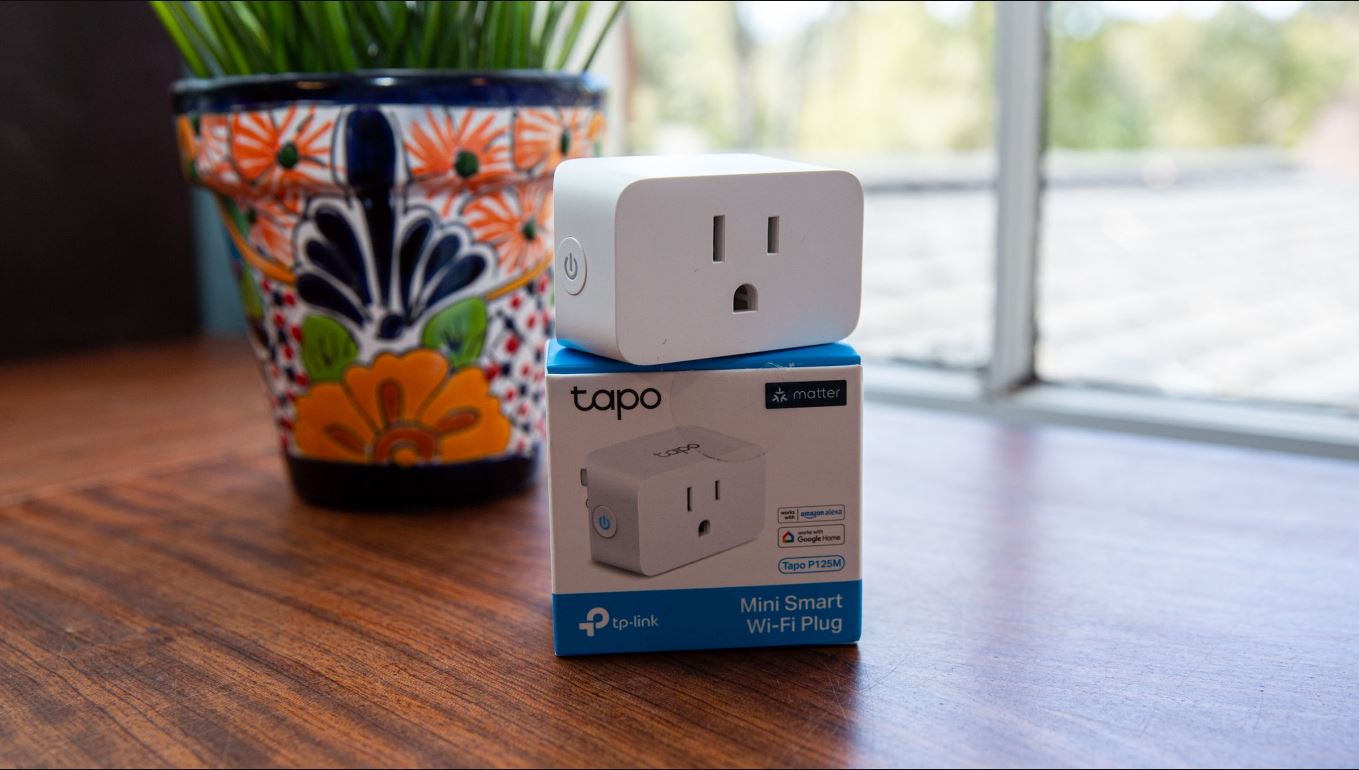Introduction
Welcome to the world of smart homes and the wonders of advanced technology that make our lives easier and more convenient. In recent years, there has been a rapid rise in the adoption of smart home devices, transforming traditional houses into modern, automated spaces. One essential component that plays a crucial role in this transformation is the Zigbee smart home hub.
Zigbee is a wireless communication protocol designed specifically for low-power devices in smart homes. It enables devices to connect and communicate with each other, forming a network that can be controlled and managed through a central hub. This hub acts as the brain of the smart home system, allowing users to monitor and control various devices from a single interface.
But what exactly is a smart home hub? In simplest terms, it is a central device that serves as the control center for all the connected smart devices in your home. It acts as an intermediary between the devices and your smartphone or tablet, enabling you to manage and automate their functions. With a Zigbee smart home hub, you can control everything from lighting, thermostats, security cameras, door locks, to even kitchen appliances, all from the convenience of your mobile device.
There are several benefits to having a Zigbee smart home hub. Firstly, it allows for seamless integration and interoperability among different smart devices. By using the Zigbee protocol, you can connect devices from various manufacturers and control them all using a single hub. This eliminates the need for multiple apps and interfaces, streamlining the management of your smart home ecosystem.
Secondly, a Zigbee smart home hub provides a high level of security for your devices and network. With built-in encryption and authentication mechanisms, it ensures that data transmitted between devices and the hub remains private and secure. This is particularly important when it comes to sensitive information, such as security camera footage or door lock codes.
Furthermore, a Zigbee smart home hub offers enhanced energy efficiency. By utilizing low-power communication protocols, Zigbee devices consume minimal energy, thereby extending the battery life of connected devices. This is especially beneficial for battery-powered devices like sensors or smart switches, which can last for months or even years without needing a battery replacement.
In the following sections, we will delve deeper into the functionalities of a Zigbee smart home hub, explore its features, and learn how to set it up effectively. So, let’s get started on your journey to creating a smart, connected home!
Understanding Zigbee
Zigbee is a wireless communication protocol specifically designed for the efficient operation of low-power devices in a smart home network. It is widely used for home automation systems, allowing for seamless and reliable communication between various devices.
The Zigbee protocol operates on the IEEE 802.15.4 standard, which defines the physical and medium access control layers for low-rate wireless personal area networks (LR-WPANs). This makes it an ideal choice for battery-powered devices that require long battery life, such as sensors and remote controls.
One of the key features of Zigbee is its ability to create a mesh network. In a mesh network, devices can communicate directly with each other or through intermediate devices called routers. This decentralized architecture ensures that data can be transmitted efficiently even if some devices become unavailable or are out of range. Additionally, Zigbee mesh networks can be extended by adding more devices, making it a scalable solution for larger homes.
Zigbee operates on the 2.4 GHz frequency band, which allows for long-range communication while minimizing interference. It also utilizes a low-power consumption strategy, enabling devices to conserve energy and extend battery life. This is achieved through mechanisms such as low duty cycle operation and sleeping modes when devices are not actively transmitting or receiving data.
In terms of data transfer rates, Zigbee provides speeds of up to 250 Kbps, which is more than sufficient for most smart home applications. This allows for real-time control and automation of devices, ensuring a smooth and responsive user experience.
Another important aspect of Zigbee is its support for various network topologies. The most common topology used in Zigbee networks is the star topology, where all devices communicate directly with a central hub. However, Zigbee also supports a peer-to-peer topology, allowing devices to communicate directly with each other without the need for a central hub. This flexibility allows for greater customization and adaptability in designing smart home systems.
Overall, Zigbee is a reliable and versatile wireless protocol that offers secure and energy-efficient communication for smart home devices. Its ability to create mesh networks, low power consumption, and support for various network topologies make it a popular choice in the world of home automation. Now that we have a better understanding of Zigbee, let’s move on to exploring the functionalities of a Zigbee smart home hub.
What Is a Smart Home Hub?
A smart home hub is a central device that acts as the control center for all the connected smart devices in your home. It serves as the bridge between your smart devices and your smartphone, tablet, or computer, allowing you to manage and control them from a single interface.
The primary function of a smart home hub is to provide a unified platform for controlling and automating various smart devices. It enables you to monitor and manage devices such as lights, thermostats, security cameras, door locks, and more, all from the convenience of your mobile device or computer.
A smart home hub acts as a communication hub, facilitating seamless and efficient communication between different devices. It ensures that devices from various manufacturers can work together harmoniously, even if they use different communication protocols. This eliminates the need for multiple apps and control interfaces, simplifying the management of your smart home ecosystem.
One of the key advantages of a smart home hub is its ability to enable automation and create personalized routines. Using the hub’s control interface or dedicated apps, you can set up automation rules that trigger certain actions based on specific events or schedules. For example, you can program your lights to turn on automatically when you enter a room, or schedule your thermostat to adjust the temperature based on your daily routine.
Furthermore, a smart home hub provides remote access to your smart devices, allowing you to control and monitor them even when you’re not at home. Whether you’re traveling, at work, or simply away from your house, you can use the hub’s mobile app to remotely control your devices, receive notifications, and ensure the security and comfort of your home.
It’s important to note that not all smart home hubs are created equal. Each hub may support different communication protocols and have varying capabilities. Some hubs, such as those using Zigbee technology, offer broader compatibility with a wide range of devices, while others may be limited to specific brands or technologies.
In the next section, we will explore the benefits of having a Zigbee smart home hub and how it can enhance the functionality and convenience of your smart home system.
The Benefits of Having a Zigbee Smart Home Hub
Having a Zigbee smart home hub comes with a multitude of benefits that enhance the functionality, convenience, and efficiency of your smart home system. Let’s explore some of the key advantages of incorporating a Zigbee smart home hub into your setup:
1. Seamless Integration and Interoperability: One of the primary benefits of a Zigbee smart home hub is its ability to integrate and communicate with devices from different manufacturers. Zigbee is an open standard, which means that devices from various brands can work together seamlessly, eliminating the need for multiple apps or control interfaces. This interoperability allows you to build a truly interconnected and unified smart home ecosystem.
2. Extensive Device Compatibility: Zigbee is supported by a wide range of smart home devices, including lights, sensors, switches, door locks, thermostats, and more. By choosing a Zigbee smart home hub, you’ll have access to a broader selection of compatible devices, giving you greater flexibility in customizing your smart home setup.
3. Enhanced Security: Security is a top concern for any smart home system, and Zigbee addresses this concern with built-in security features. Zigbee devices use advanced encryption and authentication mechanisms to ensure that data transmitted between devices and the hub remains private and secure. This helps protect sensitive information, such as video feeds from security cameras or access codes for smart locks, from unauthorized access.
4. Energy Efficiency: Zigbee is designed to be energy-efficient, making it ideal for battery-powered devices. The protocol utilizes low-power communication, allowing connected devices to conserve energy and extend battery life. This means you won’t have to constantly replace batteries in your Zigbee devices, saving you time and money in the long run.
5. Mesh Network Capability: Zigbee operates on a mesh networking architecture, where devices can communicate directly with each other or through intermediate devices called routers. This decentralized network ensures robust and reliable connectivity throughout your home. If one device becomes inaccessible, nearby devices can still relay messages, maintaining a strong and stable network connection.
6. Flexibility and Scalability: Zigbee smart home hubs offer unparalleled flexibility and scalability. You can start with a few devices and gradually expand your smart home system by adding more devices as needed. Zigbee’s ability to support large networks with multiple devices ensures that your smart home can grow with your evolving needs.
These are just some of the benefits you can enjoy when incorporating a Zigbee smart home hub into your setup. Its compatibility, security, energy efficiency, mesh networking capability, and scalability make Zigbee an excellent choice for creating a connected and automated home. Now, let’s dive deeper into how a Zigbee smart home hub works and its essential features.
How Does a Zigbee Smart Home Hub Work?
A Zigbee smart home hub acts as the central control center for all your connected smart devices. It enables communication and coordination between these devices, allowing you to manage them from a single interface. Understanding how a Zigbee smart home hub works is essential to harness its full potential. Here’s a breakdown of the key components and functionalities of a Zigbee smart home hub:
1. Zigbee Connectivity: The Zigbee smart home hub is equipped with a Zigbee radio, which allows it to communicate with Zigbee-enabled devices. The hub acts as a coordinator in the Zigbee network, facilitating the communication and control between the devices. It can connect to a wide variety of Zigbee devices, including lights, sensors, switches, and more.
2. Centralized Control: The hub provides a centralized control interface, typically in the form of a mobile app or web portal. Through this interface, you can manage and control all your Zigbee devices from one place. Whether you want to turn on the lights, adjust the thermostat, or receive alerts from security sensors, you can do it all through the hub’s control interface.
3. Automation and Scenes: A Zigbee smart home hub offers the ability to automate various tasks and create personalized scenes. Using the hub’s control interface, you can set up automation rules based on specific triggers or schedules. For example, you can create a scene that automatically turns off all the lights, lowers the thermostat, and locks the doors when you leave home. This automation capability adds convenience and saves time and energy.
4. Communication Protocols: Along with Zigbee connectivity, smart home hubs often support other communication protocols, such as Wi-Fi or Bluetooth. This enables the hub to connect and integrate with devices that use different protocols. By supporting multiple protocols, the hub offers compatibility with a wider range of devices, giving you more options and flexibility in building your smart home system.
5. Integration with Voice Assistants: Many Zigbee smart home hubs are compatible with popular voice assistants like Amazon Alexa and Google Assistant. This allows you to control your devices using voice commands, adding an additional layer of convenience to your smart home experience.
6. Cloud Connectivity: Some Zigbee smart home hubs offer cloud connectivity, allowing for remote access and control of your devices from anywhere in the world. This means you can check the status of your devices, receive notifications, and control them even when you are away from home. Cloud connectivity also enables firmware updates for the hub and devices, ensuring you have the latest features and security patches.
Overall, a Zigbee smart home hub acts as the central nervous system of your smart home, connecting and controlling a wide range of Zigbee devices. Its ability to provide centralized control, automation, compatibility with voice assistants, and support for various communication protocols makes it a powerful tool for creating a truly smart and connected home. In the next section, we will explore the important features to look for when choosing a Zigbee smart home hub.
Features to Look for in a Zigbee Smart Home Hub
When selecting a Zigbee smart home hub, it’s important to consider several key features that can enhance the functionality and compatibility of your smart home system. These features can vary between different hubs, so let’s explore the essential ones to look for:
1. Zigbee Compatibility: Ensure that the hub is compatible with the Zigbee protocol and supports the version of Zigbee used by your devices. This compatibility will allow seamless communication between the hub and your Zigbee-enabled devices.
2. Device Integration: Check if the hub supports integration with a wide range of devices from different manufacturers. This compatibility ensures that you have a broader selection of devices to choose from and can easily expand your smart home system in the future.
3. Connectivity Options: Look for a hub that offers multiple connectivity options, such as Wi-Fi, Bluetooth, or Ethernet. This enables you to connect the hub to your home network using the most convenient method for your setup.
4. Centralized Control Interface: Consider the ease of use and functionality of the hub’s control interface. Look for a hub that provides a user-friendly and intuitive control interface, whether through a mobile app, web portal, or both. It should allow you to easily manage and control all your connected devices from a single platform.
5. Automation and Scheduling: Check if the hub supports automation and scheduling capabilities. This feature allows you to create routines and set up automated actions based on specific triggers or schedules. It adds convenience to your smart home system by eliminating the need to manually control each device.
6. Voice Assistant Compatibility: Consider if the hub integrates with popular voice assistants like Amazon Alexa or Google Assistant. Voice assistant compatibility allows you to control your devices using voice commands, adding an extra layer of convenience to your smart home experience.
7. Security Features: Ensure that the hub has robust security features to protect your smart home system. Look for features like encryption, authentication, and secure remote access. These measures help safeguard your devices and data from unauthorized access.
8. Expandability: Check if the hub supports the addition of new devices and the ability to create a scalable smart home system. This expandability allows you to start with a few devices and gradually add more as needed, ensuring your smart home system can grow with your requirements.
9. Manufacturer Support: Consider the reputation and support provided by the hub’s manufacturer. Look for a hub that is backed by a reputable company known for providing regular firmware updates, bug fixes, and responsive customer support.
By considering these essential features, you can ensure that the Zigbee smart home hub you choose is compatible with your devices and meets your specific requirements. Now that we have discussed the important features to look for, let’s move on to choosing the right Zigbee smart home hub for your needs.
Choosing the Right Zigbee Smart Home Hub for Your Needs
With a wide range of Zigbee smart home hubs available in the market, choosing the right one for your needs can be overwhelming. However, considering a few key factors can help simplify the selection process. Here are some important considerations to keep in mind when choosing a Zigbee smart home hub:
1. Compatibility: Ensure that the hub is compatible with the Zigbee devices you plan to use in your smart home system. Check for compatibility with the specific Zigbee version used by your devices to ensure seamless communication and integration.
2. Device Support: Verify that the hub supports a wide range of devices from different manufacturers. This flexibility enables you to choose from a variety of devices and expand your smart home system with ease.
3. Integration Options: Consider how the hub integrates with other smart home platforms or ecosystems. Look for compatibility with popular voice assistants like Amazon Alexa or Google Assistant, as well as compatibility with other smart home protocols such as Wi-Fi or Bluetooth. This allows for greater flexibility and interoperability with other devices and systems.
4. Control Interface: Evaluate the usability and functionality of the hub’s control interface. The control interface should be intuitive and user-friendly, providing convenient management of your smart home devices. Consider whether the hub offers a mobile app, a web portal, or both, and choose a hub that aligns with your preferred method of control.
5. Automation and Customization: Look for a hub that provides robust automation and customization capabilities. This allows you to create personalized routines and automate tasks based on specific triggers or schedules. Evaluate the flexibility of the hub’s automation features and ensure they align with your desired level of customization.
6. Security: Ensure that the hub prioritizes security and privacy. Look for features such as data encryption, secure remote access, and regular firmware updates. Robust security measures are crucial to protecting your smart home devices and personal information from potential vulnerabilities.
7. Expandability: Consider the scalability and expandability of the hub. Choose a hub that can accommodate your current needs and has the capability to support additional devices as your smart home system grows. This ensures that your hub can adapt to your changing requirements over time.
8. Manufacturer Support: Research the reputation and customer support provided by the hub’s manufacturer. Look for a company that offers regular firmware updates, responsive customer service, and ongoing support for their products. This ensures that you will receive assistance if you encounter any issues or require troubleshooting assistance.
By carefully considering these factors, you can select the Zigbee smart home hub that aligns with your specific needs and preferences. Taking the time to compare features and evaluate compatibility will help you make an informed decision and create a smart home system that is tailored to your requirements. Now, it’s time to set up your Zigbee smart home hub and start enjoying the benefits of a connected home!
Setting Up a Zigbee Smart Home Hub
Setting up a Zigbee smart home hub is a crucial step in creating a connected and automated home. Although the process may vary depending on the specific hub and devices you are using, here are some general steps to help you get started:
1. Choose a Suitable Location: Find a central location in your home for the hub that allows for optimal coverage and communication with your Zigbee devices. Avoid placing the hub near metal objects or other potential sources of interference.
2. Connect the Hub to Power and Network: Plug the hub into a power outlet and connect it to your home network using an Ethernet cable or Wi-Fi. Follow the manufacturer’s instructions for proper connection and configuration.
3. Install the Hub’s Mobile App: Download the mobile app provided by the hub’s manufacturer onto your smartphone or tablet. This app will serve as the control interface for managing and controlling your Zigbee devices.
4. Add Devices to the Hub: Follow the instructions provided by the hub’s manufacturer to add your Zigbee devices to the hub. This typically involves putting the devices into pairing mode and using the mobile app to discover and connect them to the hub.
5. Organize and Name Devices: Once your devices are successfully connected to the hub, organize and name them within the mobile app for easy identification and control. Categorize them by room or purpose to simplify management and automation.
6. Customize Automation and Scenes: Take advantage of the hub’s automation and scene creation features. Set up automated routines and scenes that align with your preferences and daily routines. For example, you can create a scene that activates specific lights and adjusts the thermostat when you say “Goodnight” to your voice assistant.
7. Test and Adjust Settings: Ensure that all your devices are functioning correctly by testing their functionality individually and in combination. Adjust settings as needed to fine-tune the performance and behavior of your smart home system.
8. Explore Additional Features: Familiarize yourself with the additional features offered by the hub and its mobile app. These may include energy monitoring, scheduling, remote access, and firmware updates. Take the time to customize these features to enhance the usability and efficiency of your smart home system.
It’s important to consult the specific instructions provided by the hub’s manufacturer for detailed guidance on the setup process. Remember that the setup steps may vary depending on the brand and model of your Zigbee smart home hub.
By following these general steps and leveraging the features offered by your Zigbee smart home hub, you’ll be well on your way to enjoying the convenience and automation of a connected home. Take the time to explore the capabilities of your hub and experiment with different configurations to optimize your smart home experience.
Troubleshooting Common Issues with Zigbee Smart Home Hubs
While Zigbee smart home hubs are generally reliable, there may be occasions when you encounter issues or face difficulties during setup or operation. Understanding and troubleshooting common issues can help ensure a smooth and seamless smart home experience. Here are some potential issues you may encounter with Zigbee smart home hubs, along with troubleshooting tips:
1. Device Pairing or Connectivity Problems: If you are experiencing difficulties pairing your devices or establishing a stable connection, try the following steps:
- Ensure that the devices and the hub are within range of each other. Walls, furniture, or interference from other devices may affect the signal.
- Check that the devices are in pairing mode and follow the manufacturer’s instructions for pairing.
- Restart the hub and the device you are trying to pair.
- Reset the device to its factory settings and try pairing again.
2. Interference Issues: Zigbee operates on the 2.4 GHz frequency band, which may experience interference from other household devices like Wi-Fi routers or cordless phones. To resolve interference issues:
- Move the hub and Zigbee devices away from other interfering devices.
- Change the channel or frequency used by your Wi-Fi router to minimize interference.
- Consider using Zigbee devices that operate on different frequency bands, such as Zigbee 3.0 devices on the 2.4 GHz band or Zigbee PRO devices on the 868 MHz or 915 MHz bands.
3. Device Unresponsiveness: If a device connected to your Zigbee hub becomes unresponsive, try these troubleshooting steps:
- Ensure that the device has sufficient battery or power supply.
- Confirm that the hub and the device are still connected to the network.
- Restart the device by removing and re-inserting the batteries or power source.
- Re-pair the device with the hub to refresh the connection.
4. Network Range Limitations: Zigbee networks typically have a limited range, especially in larger homes or homes with thick walls. To extend the range and improve coverage:
- Add additional Zigbee devices as routers to expand the network coverage.
- Consider using a Zigbee range extender or repeater for devices that are far from the hub.
- Strategically position the hub and devices to maximize the signal strength and minimize obstacles.
5. Firmware Updates: Like any other technology, Zigbee smart home hubs may require firmware updates from time to time. Ensure that you regularly check for updates and install them to benefit from performance improvements, bug fixes, and new features. Follow the manufacturer’s instructions for updating the hub’s firmware.
If you continue to experience issues or if the troubleshooting tips don’t resolve the problem, consult the manufacturer’s support resources or contact customer support for further assistance. They will be equipped to provide personalized troubleshooting guidance for your specific hub and devices.
By familiarizing yourself with these common issues and troubleshooting approaches, you’ll be prepared to address any challenges that may arise with your Zigbee smart home hub. Remember to refer to the specific instructions provided by the manufacturer for your hub model to ensure accurate troubleshooting and resolution of issues.
Conclusion
In the realm of smart homes, a Zigbee smart home hub serves as a vital component for creating a connected and automated space. With its ability to seamlessly integrate devices, provide centralized control, and offer automation capabilities, a Zigbee smart home hub enhances the functionality and convenience of your smart home system.
Zigbee, as a wireless communication protocol, enables low-power devices to connect and communicate with each other, forming a robust mesh network. This allows for reliable and energy-efficient communication between devices throughout your home.
When selecting a Zigbee smart home hub, it’s important to consider its compatibility with your devices, the range of supported devices, and integration options with other smart home platforms. The hub’s control interface, automation features, security measures, and expandability are also crucial factors to evaluate when making your decision.
After acquiring the right Zigbee smart home hub, the setup process involves connecting the hub, adding and organizing devices, and customizing automation and scenes. Troubleshooting common issues, such as device connectivity or interference problems, is also essential to ensure smooth operation and optimal performance of your smart home system.
In conclusion, embracing the power of a Zigbee smart home hub brings numerous benefits, including seamless device integration, enhanced security, energy efficiency, and scalability. By harnessing the capabilities of Zigbee technology and selecting the right hub for your needs, you can create a truly connected, automated, and convenient smart home environment.
So, take the leap into the world of Zigbee smart home hubs, and unlock the potential of a smarter home that brings comfort, convenience, and control right to your fingertips.







